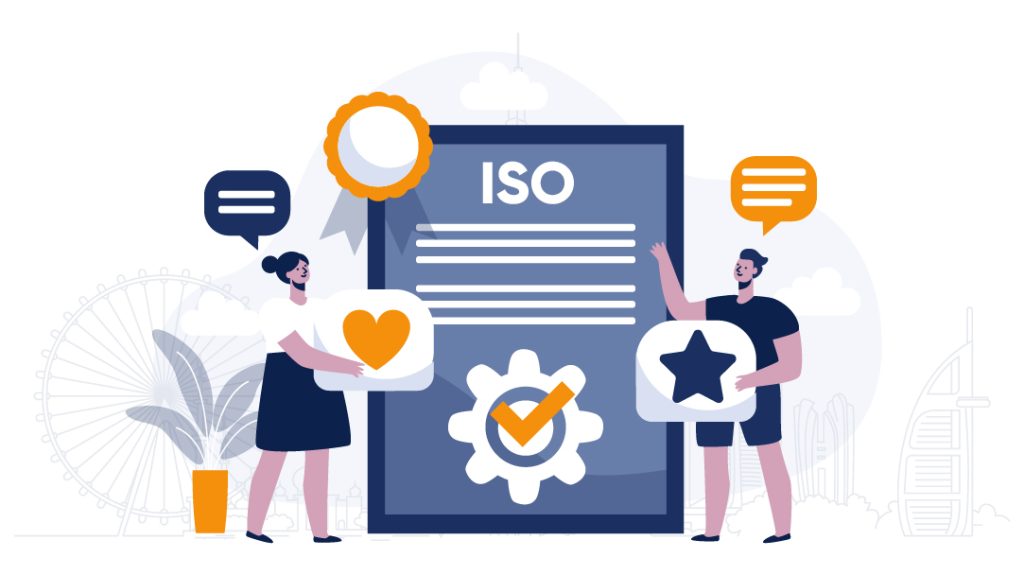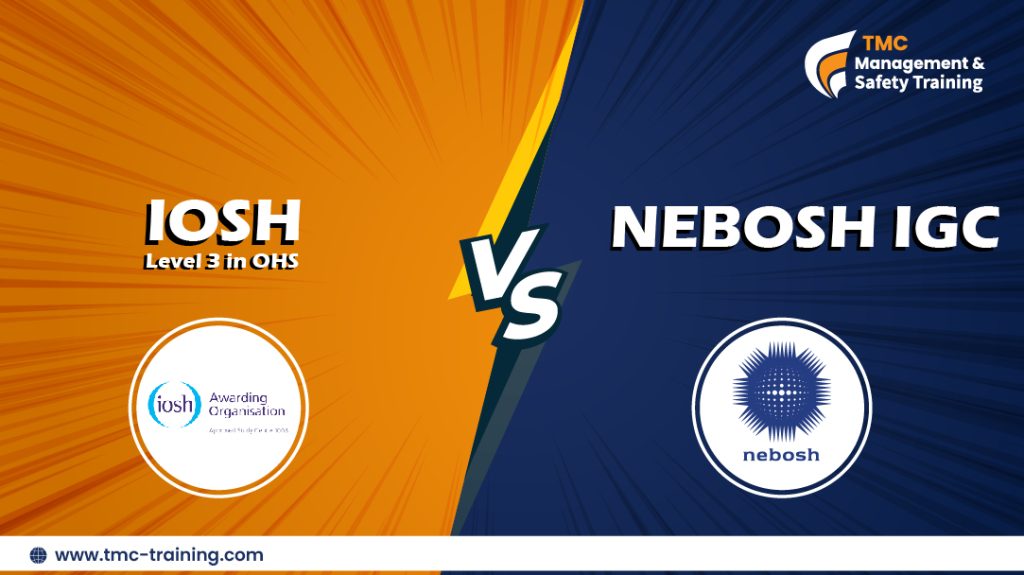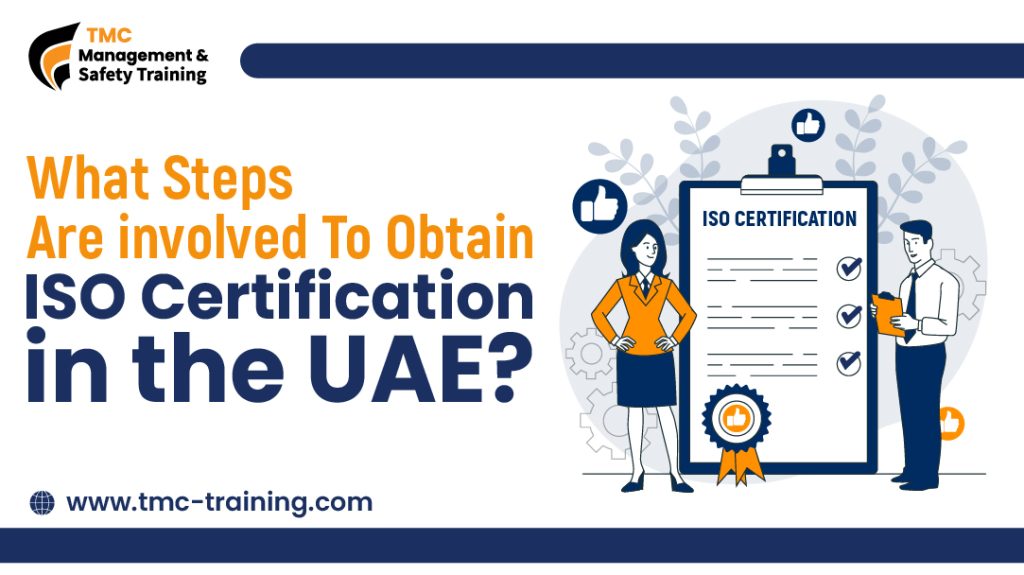We’re thrilled to share some exciting news—TMC Management and Safety Institute is now officially the first approved centre in the GCC to...
Empowering Organizations: TMC Institute’s Impact on Health and Safety Practices
BLOG
Empowering Organizations: TMC Institute Impact on Occupational Health and Safety Practices

Introduction
In today’s rapidly evolving work environment, safeguarding the safety and well-being of employees has become a top priority for organizations worldwide.
Leading the front in developing a strong culture of occupational health and safety is TMC Management & Safety Institute, a provider of information and training in these areas. thanks to its creative methods and extensive training programs.
TMC Health and Safety gives people and organizations the tools they need to make workplaces safer and reduce risks. In this extensive blog article, we will explore the various approaches Our team of experts improves the culture of health and safety by implementing workable solutions and research-based tactics to meet the changing demands of contemporary workplaces.
Understanding the Importance of Health and Safety Culture
Defining Health and Safety Culture: Every effective safety program starts with a solid health and safety culture. An organization’s values, attitudes and behaviors that influence how it approaches workplace safety are collectively referred to as its occupational health and safety culture. It goes beyond simply following the law to promote an attitude in which the organization views safety as fundamental to all facets of its operations.
Table of Contents
The Impact of a Positive Safety Culture: A positive safety culture has a dramatic impact on minimizing workplace accidents and injuries, as extensive research has proved. Strong safety cultures are associated with fewer incidents, decreased accident rates and improved employee morale. Workers are more empowered to recognize and report risks, which promotes proactive risk management and an all-around safer work environment.
Legal and Regulatory Requirements: In addition to the moral responsibility, companies are required by law to provide a safe workplace for their workers. Employers are required by law, such as the Health and Safety at Work Act, to protect the health, safety and welfare of their workers as well as any third parties that may be impacted by their operations. Organizations who violate these regulatory rules risk serious fines and harm to their reputation.
TMC Management and Safety Approach to Occupational Health & Safety Training
Comprehensive Curriculum: TMC Occupational Health and Safety provides a comprehensive range of training programs that are intended to give people the information and abilities they need to handle challenging health and safety situations. TMC Training Institute’s curriculum covers every facet of workplace safety, from risk assessment to emergency response, giving trainees a strong foundation in safety principles and procedures.
Practical Learning: In our occupational health and safety certification includes case studies and practical exercises in its training programs because it understands the value of practical experience. By applying theoretical concepts to real-world circumstances, participants can improve their comprehension and memory of important safety principles.
Customized Solutions: Every business is different, with its own set of safety concerns and goals. TMC Health and Safety is aware of this. For this reason, it provides specialized training programs made to address the unique requirements and difficulties faced by various businesses and industries. TMC Institute works together with customers to create training programs that are in line with their aims and objectives, whether that means creating industry-specific safety regulations or tackling new safety issues.

Promoting Proactive Risk Management
- Proactive Risk Assessment: Proactive risk assessment is at the heart of TMC Management and safety philosophy. Through the identification and implementation of preventative measures, organizations can reduce the probability of accidents and injuries. The TMC Institute equips participants with the methods and instruments required to carry out exhaustive risk analyses and create potent risk-reduction plans.
- Employee Engagement: TMC Management and safety training acknowledges that when it comes to workplace safety, employees are the first to defend themselves. It highlights the significance of staff involvement in safety measures as a result. In addition to fostering a culture of safety, encouraging employee participation and input also makes it easier to recognize and handle safety issues before they become significant occurrences.
- Continuous Monitoring: The fast-paced workplace of today can lead to a rapid evolution of safety issues. To stay ahead of new safety hazards. TMC Institute highlights the value of ongoing monitoring and feedback systems. Through the utilization of data analytics and feedback systems, entities can discern patterns, monitor safety performance and adopt pre-emptive actions to tackle possible problems.
Fostering a Safety-Conscious Environment
- Leadership Commitment: A safety-conscious atmosphere must be fostered by effective safety leadership. The TMC Institute places a strong emphasis on the leadership’s role in establishing a culture of safety and setting an example. Safety is clearly communicated as the organization’s top priority when executives show that they are committed to safety principles and prioritize safety.
- Communication Channels: Fostering an atmosphere that prioritizes safety requires clear communication. TMC Occupational Health and Safety Institute assists businesses in setting up transparent procedures for reporting safety issues and exchanging knowledge about best practices. Whether it’s via newsletters, internet platforms or regular safety meetings, efficient communication makes sure that workers at all organizational levels are aware of safety information.
- Recognition and Reward: The TMC Institute understands how critical it is to thank staff members for their contributions to upholding a safe workplace culture. Recognizing and rewarding safety successes, whether through official recognition programs, incentives or straightforward expressions of gratitude, reinforces positive safety behaviors and promotes ongoing vigilance.

Research-Based Strategies for Health and Safety Improvement
Evidence-Based Practices: TMC Management and safety training Institute is dedicated to using industry best practices and research results to guide safety initiatives. Through keeping up with the most recent findings and innovations in the field of occupational health and safety. TMC Institute guarantees that the solutions and training it offers are based on best practices that have been verified by research.
Benchmarking and Performance Measurement: TMC Institute assists companies in establishing goals for improvement and comparing their safety performance to industry norms. Organizations can identify opportunities for improvement and apply focused interventions to drive continuous improvement in safety performance by measuring key safety metrics and monitoring progress over time.
Collaboration and Knowledge Sharing: Industry-wide advancement of occupational health and safety measures depends on collaboration. Through industrial seminars, cooperative research projects and networking activities. TMC Management and safety Institute promotes cooperation and knowledge sharing. Organizations may increase the standard for safety excellence by pooling best practices, lessons learned and creative safety methods.
Conclusion
TMC Occupational health and Safety Institute plays a pivotal role in elevating health and safety culture by providing comprehensive training, promoting proactive risk management and fostering a safety-conscious environment. Through its innovative approaches and research-based strategies.
TMC Institute for management and Safety Training empowers organizations to prioritize safety and well-being in the workplace, ultimately contributing to safer and healthier work environments for all. By embracing the principles of health and safety culture, organizations can not only protect their most valuable asset—their employees—but also enhance productivity, reduce costs, and strengthen their reputation as responsible corporate citizens.
RELATED BLOGS
In the fast-paced and diverse environment of the United Arab Emirates (UAE), businesses thrive while employees’ well-being remains a top...
In today’s competitive business environment, maintaining streamlined operations while ensuring compliance with quality, environmental, and health and safety standards is...
In Dubai, the demand for quality education and skilled training professionals has seen a significant rise. With a city that...
In today’s competitive global market, obtaining ISO 9001 certification is crucial for businesses seeking to demonstrate quality management practices, enhance...
1. Introduction to Montessori Teacher Training In recent years, the UAE has experienced significant growth in Montessori education, a system...
Achieving an IRCA-approved ISO Lead Auditor certification can open doors to a world of professional opportunities, especially in a global business...
ISO (International Organization for Standardization) certification is a globally recognized standard for ensuring the quality, safety, and efficiency of products,...
In today’s fast-paced world, ensuring the health and safety of employees has become a top priority for companies in Dubai,...
BLOG Essential Criteria for ISO 45001 Occupational Health and Safety Management System The world in which we live has rapidly...
BLOG How to Become a Safety Officer? What does a Safety Officer do? A safety officer is an occupational health...
BLOG NVQ Level 6 Occupational Health and Safety: A Key to a Safer Workplace Introduction The NVQ Level 6 Diploma...
BLOG Understanding NVQ and How to Obtain Them What is an NVQ? National Vocational Qualification known as NVQ is a...
BLOG Important Roles and Responsibilities of Safety Training Officer Prioritizing safety protection is not only a legal requirement, but also...
BLOG Best Practices To Manage Third-Party Safety Training Effectively For Enhanced Workplace Security A safe work environment is an important...
BLOG Why A Company Have an ISO Consultant For 9001 Standard? Why A Company Have an ISO Consultant For 9001...
BLOG What Steps Are involved To Obtain ISO certification in the UAE? Many business sectors, including healthcare, manufacturing, energy, IT...
BLOG Conduct Disorder In Children Support and Intervention Strategies Introduction Children encounter a variety of difficulties in today’s fast-paced, constantly...
BLOG Empowering Organizations: TMC Institute Impact on Occupational Health and Safety Practices Introduction In today’s rapidly evolving work environment, safeguarding...


















